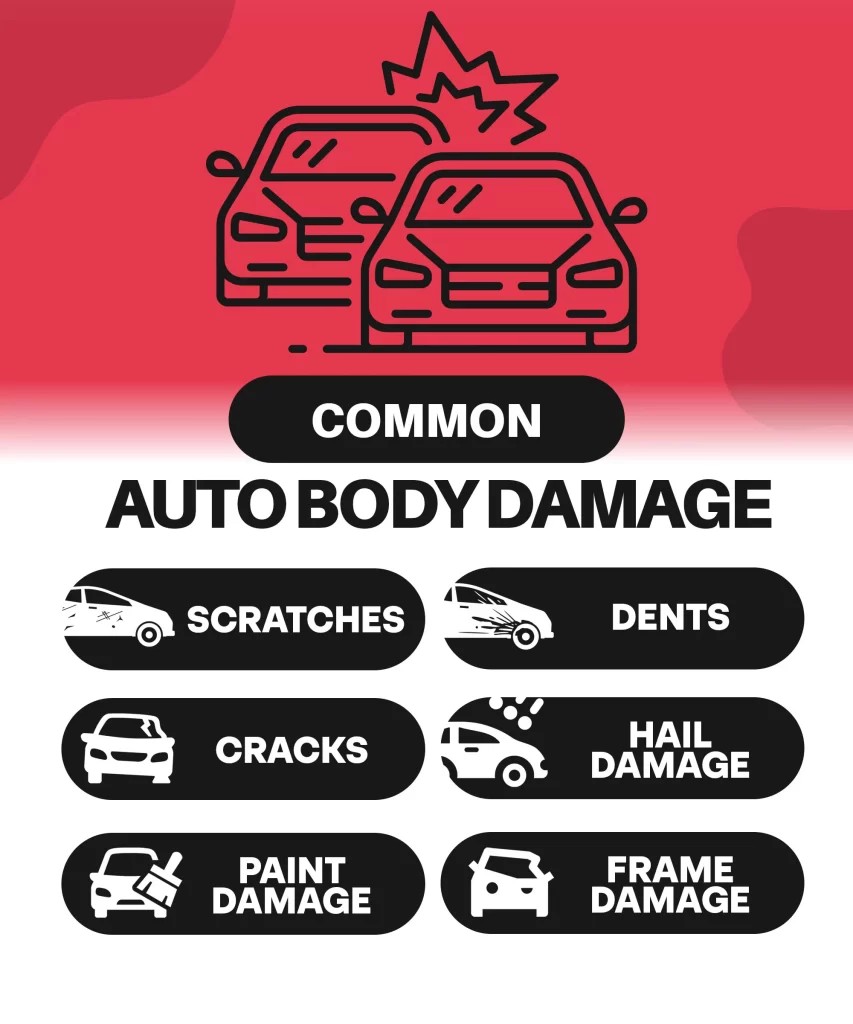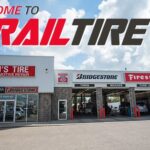Car body damage can range from minor scratches to significant structural issues. Understanding how to repair major car body damage is crucial for maintaining your vehicle’s safety, appearance, and value. While minor blemishes might be addressed with DIY solutions, major damage often requires professional expertise and specialized techniques. This guide will walk you through the common types of major car body damage and the essential repair methods used by professionals.
Understanding Major Car Body Damage
Major car body damage goes beyond superficial scratches and minor dents. It encompasses significant harm that affects the structural integrity, functionality, or overall value of your vehicle. This type of damage often results from serious accidents, collisions, or severe environmental factors. Recognizing major damage is the first step in understanding the appropriate repair process.
Common Types of Major Auto Body Damage
-
Frame Damage: This is arguably the most severe form of car body damage. The frame or chassis is the backbone of your vehicle, providing structural support and protecting occupants in a collision. Frame damage, often resulting from high-impact accidents, can compromise the vehicle’s stability, alignment, and safety.
-
Extensive Denting and Crushing: Major collisions can cause widespread dents and crushing across multiple body panels. This goes beyond simple dents and involves significant deformation of metal, often requiring panel replacement or extensive reshaping.
-
Significant Paint Damage and Corrosion: While paint damage can be minor, major incidents can lead to deep scratches exposing bare metal, accelerating corrosion, or causing paint to peel over large areas. If left untreated, this can worsen and affect the structural integrity of the panels over time.
-
Panel Distortion and Misalignment: Major impacts can distort body panels, causing them to misalign with adjacent panels or the vehicle’s frame. This can affect door and hood closures, create uneven gaps, and impact the overall aesthetics and aerodynamics of the car.
-
Hail Damage (Severe Cases): While often considered minor, extreme hail storms can cause extensive and deep dents across the entire vehicle surface, sometimes penetrating the paint and causing significant aesthetic and potentially structural damage in severe cases.
Professional Techniques to Repair Major Car Body Damage
Repairing major car body damage requires specialized tools, expertise, and a range of techniques. Here are some key methods employed by auto body repair professionals:
-
Frame Straightening: When frame damage occurs, specialized frame straightening equipment is essential. Technicians use hydraulic machinery and precise measuring systems to carefully realign the vehicle’s frame back to its factory specifications. This process is crucial for restoring structural integrity and ensuring proper vehicle handling and safety.
-
Body Panel Replacement: In cases of severely damaged panels that cannot be effectively repaired through dent removal or reshaping, panel replacement becomes necessary. This involves removing the damaged panel and installing a new one. Professionals ensure proper alignment, welding (if required), and corrosion protection for a seamless and durable repair.
-
Traditional Dent Repair for Major Deformations: For significant dents and crushed areas, traditional dent repair techniques are employed. This often involves using body fillers to reshape the damaged area after pulling or hammering out the major deformations. Skilled technicians meticulously apply and sand body filler to achieve a smooth and factory-like contour before painting.
-
Welding and Metal Fabrication: Major damage may necessitate welding to repair tears, cracks, or structural components. In some cases, technicians may need to fabricate small metal parts to replace sections that are beyond repair. Welding requires expertise to ensure strong and safe structural repairs.
-
Precision Paint Matching and Refinishing: After major bodywork, repainting is crucial. Achieving a seamless finish requires precision paint matching to blend the repaired area with the surrounding original paint. Professional paint technicians use advanced color-matching technology and techniques to ensure an invisible repair. Refinishing involves applying primer, base coat, and clear coat for a durable and factory-quality paint finish.
Why Professional Expertise is Essential for Major Car Body Repair
Attempting to repair major car body damage yourself is generally not recommended and can compromise your vehicle’s safety and value. Major damage often involves structural repairs, complex techniques, and specialized equipment that are beyond the reach of the average DIYer.
Choosing a reputable auto body repair shop ensures:
- Expert Technicians: Certified and experienced technicians have the knowledge and skills to accurately assess and repair major damage.
- Specialized Equipment: Professional shops have access to frame straightening machines, welding equipment, paint booths, and other specialized tools necessary for proper repairs.
- Quality Materials: Reputable shops use high-quality replacement parts, paints, and materials to ensure durable and long-lasting repairs.
- Safety Standards: Professional repairs adhere to industry safety standards, ensuring your vehicle is restored to its pre-accident safety levels.
- Warranty and Guarantee: Many reputable shops offer warranties on their repair work, providing peace of mind and assurance of quality.
Conclusion
Repairing major car body damage is a complex process that demands professional attention. Understanding the types of major damage and the techniques involved can help you appreciate the expertise required for proper restoration. When faced with significant car body damage, entrusting your vehicle to a qualified auto body repair shop is the best course of action to ensure safety, quality, and the preservation of your car’s value. Contact a certified collision repair center to assess your damage and discuss the best repair solutions for your vehicle.


